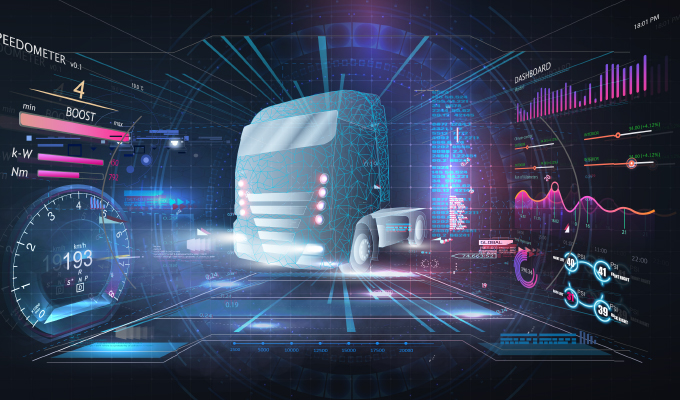By Roger Brereton
From Lennon and McCartney to Steve Jobs and Steve Wozniak it is often the case that collaborative partnerships are more effective than solo efforts. It is no surprise then that the world’s largest truck manufacturers are partnering with innovative start-ups. In the article below, Roger Brereton, head of sales at universal joint manufacturer Pailton Engineering, looks at some of the key emerging partnerships and the benefits they offer to OEMs.
A recent report tracking intellectual property movements shows that the race for autonomous trucking is gearing up significantly. According to a report by Patent Forecast, the quantity of patents issued and applied for has increased significantly in the past four years.
Long-haul trucking has emerged as a key target for driverless technology, an outcome few would have predicted a decade ago. The demand for deliveries is increasing while a driver shortage is growing. At the same time, automating long-haul journeys on straight highways is proving more viable than creating a driverless vehicle that can navigate complicated urban environments.
THE MAIN PLAYERS
The race to develop SAE Level 4 and Level 5 autonomy—fully driverless vehicles—are driving the need for OEM and start-up partnerships. For many, the current frontrunner is the partnership between Daimler and Waymo, which is owned by Google’s parent company Alphabet. Waymo is currently involved in extensive testing with its autonomous driver having notched over 20 million miles of autonomous driving experience on public roads.
Navistar, meanwhile, formed a partnership with San Diego-based self-driving technology start-up, TuSimple. The aim is to produce Level 4 driverless trucks by 2024. The third notable partnership in this emerging race is between Aurora and Volvo. Aurora joined the race at a later stage and aims to retrofit its driverless tech to older trucks.
BEHIND THE SCENES
In many successful partnerships, there are normally other key players supporting the leading duo. TuSimple, for example, partners with other companies to provide sensor technologies. Whether it is Lidar technology or high-quality steering components like a universal joint, these OEMs need parts suppliers that can provide the flexibility needed for these projects to succeed.
Even when a start-up can build the vehicles itself and can offer a high percentage of proprietary technology, it still needs partners to deliver key components. Take, for example, British start-up Arrival, which recently listed on the New York Stock Exchange. The company plans to develop buses and commercial vehicles using its novel microfactory concept. Yet although 60% of the parts for its commercial vehicle are vertically integrated, this still leaves 40% of the parts to be supplied.
PARTNERSHIP PROS
Larger manufacturers are not always best suited to fast and bold technological innovations—a specialty of start-ups. On the other hand, start-ups need corporations to help them grow. The partnerships are therefore mutually beneficial. We have seen this develop in auto making, as well as long-haul trucking.
In terms of the development of autonomous trucking specifically, speed is the key benefit that these large manufacturers are looking for when they seek the help of a start-up. It is not simply developing the technology, but winning the race against competitors that counts.
There is also the first mover advantage to consider here. The initial cost of autonomous technology (AT) will raise the entry bar, potentially pricing out smaller operators but offering an enormous cost advantage in the long run. Currently, fleets can offer around 80,000 to 90,000 miles per year with a solo driver, but if AT can remove the hours-of-service constraints that operators currently contend with, this is estimated to rise to between 200,000 and 300,000 hours, according to one model.
The race to deliver the next generation of vehicle technology is gathering momentum. OEMs cannot win this race alone, and their choice of partner will go a long way in determining who can bring autonomous commercial vehicles to the market first.
Whether it is start-ups or parts suppliers, the right partner can offer the speed and design flexibility that OEMs need to deliver their projects ahead of the competition.
ABOUT THE AUTHOR
Roger Brereton is the head of sales at steering systems manufacturer Pailton Engineering. Pailton Engineering Ltd designs and manufactures steering parts for heavy vehicles. Find out more, visit www.pailton.com.




